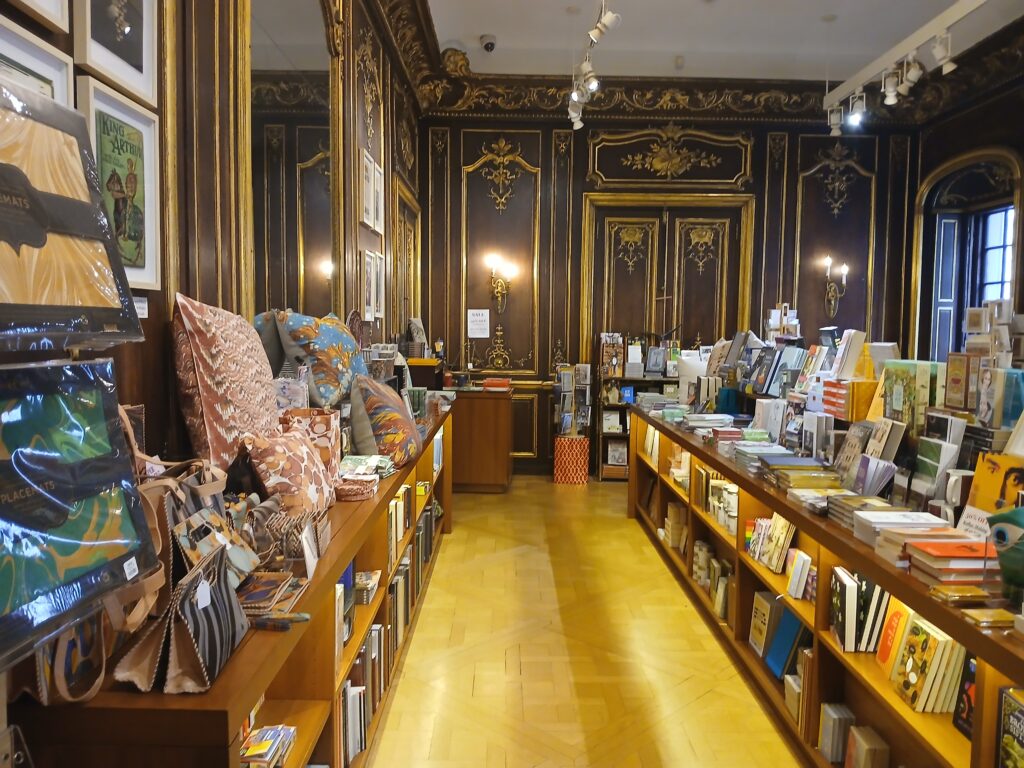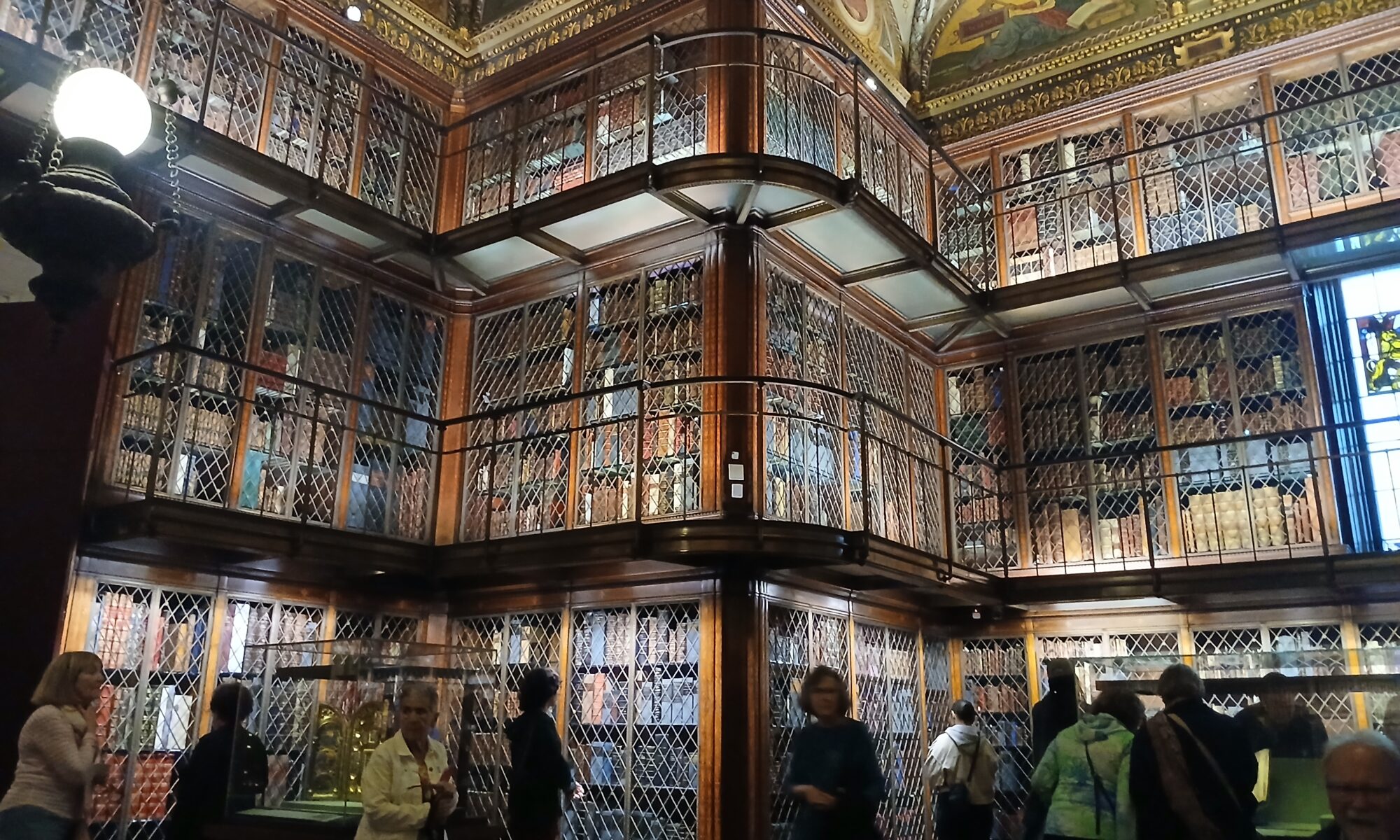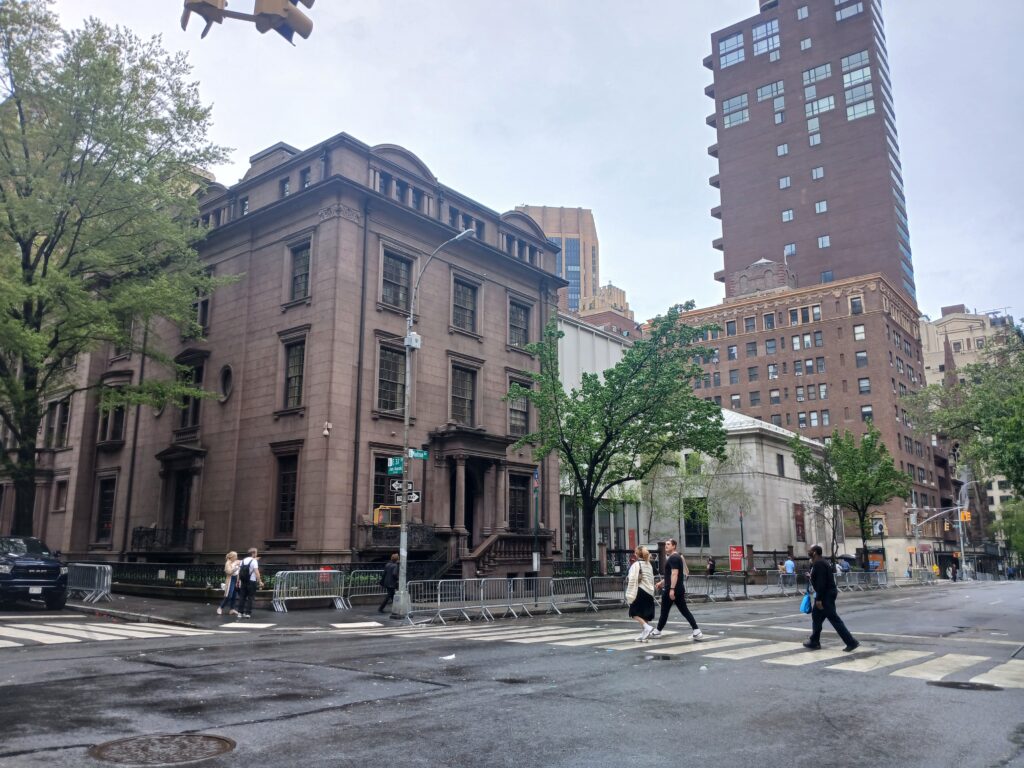
I can’t believe it took us this long to get to the Morgan Museum and Library. I can’t wait to go back. Have you gone to the Morgan Library with kids? The residence on the left is part of the complex, along with the Renzo Piano building in the middle and the annex on the right of it. The library is behind all this, in the far corner.
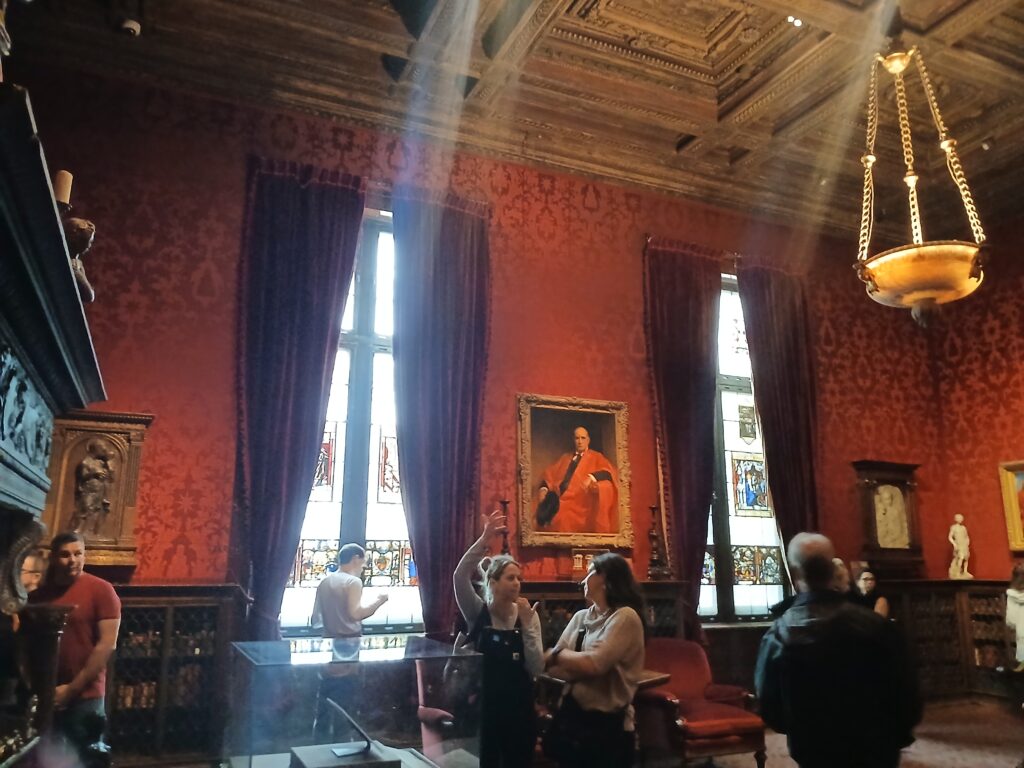
The Morgan Library and Museum is made of a multiple-building campus on Madison and 37th Street. It is a museum and independent research library, which began as financier Pierpont Morgan’s personal library. He loved collecting, and that included illuminated and literary manuscripts (he wanted first editions or those that stood out), early printed books, plus old master drawings and prints.
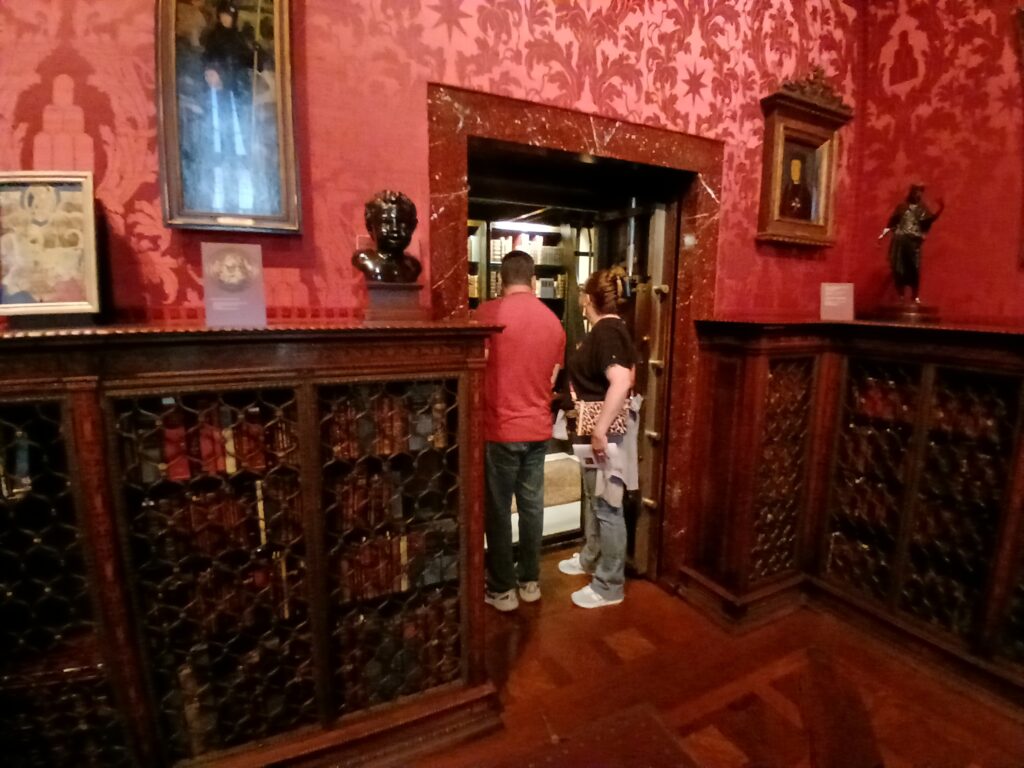
The library was built in the early 1900s next to his residence. Jumping ahead, after Morgan Senior died, son JP Morgan Jr. (Jack) realized its importance and need to be public, not in private hands.
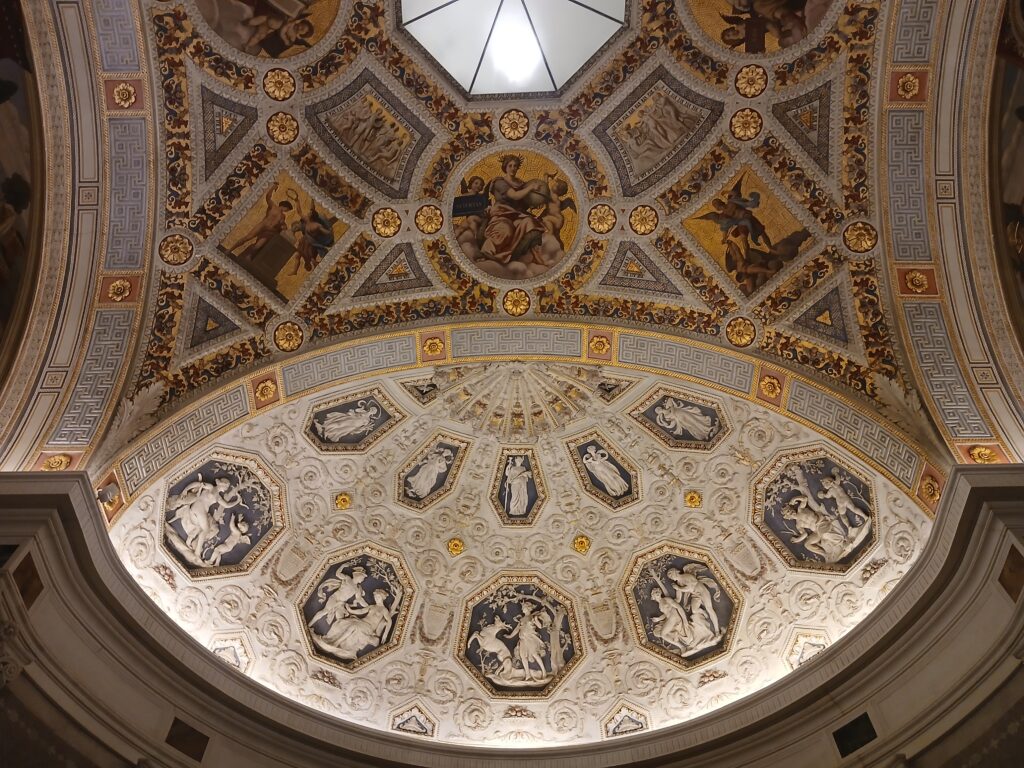
One of the rooms in his library building, this rotunda is a soaring space with columns and a gorgeous ceiling.
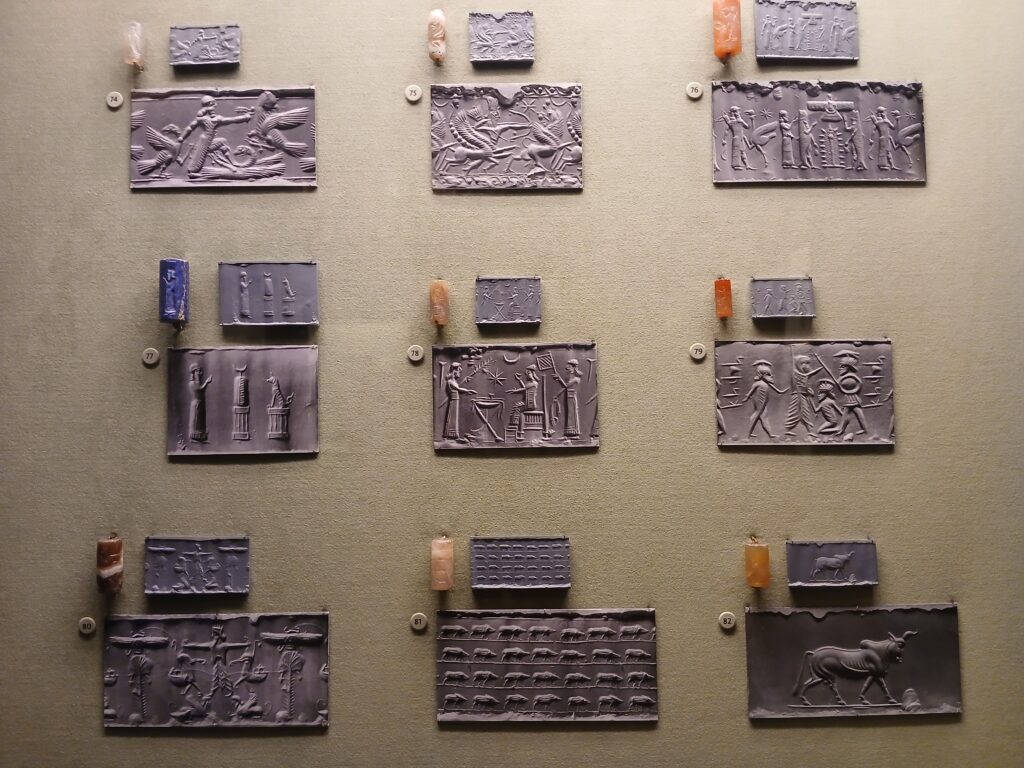
The librarian’s office, which contains books on an upper level, now contains artifacts like these seals, along with medieval jewelry and other artifacts. There were a lot of seals here (similar in quantity to what we saw at the Oriental Institute at the University of Chicago). These were Mesopotamian going back to the 500 BCE era. You can’t tell much from looking at the actual tiny seal itself, but the museum made clay imprints in real size and blown up so you can see what’s on each of them. Kids will love looking at them and picking out the stories and animals.

This room above, the library, is the reason you go visit the Morgan Library. It is hard to capture, even in multiple photos. There are a few benches in there – I recommend sitting for awhile to look around. And the Bloomberg Connects app will tell you about many things in the room – bring headphones.
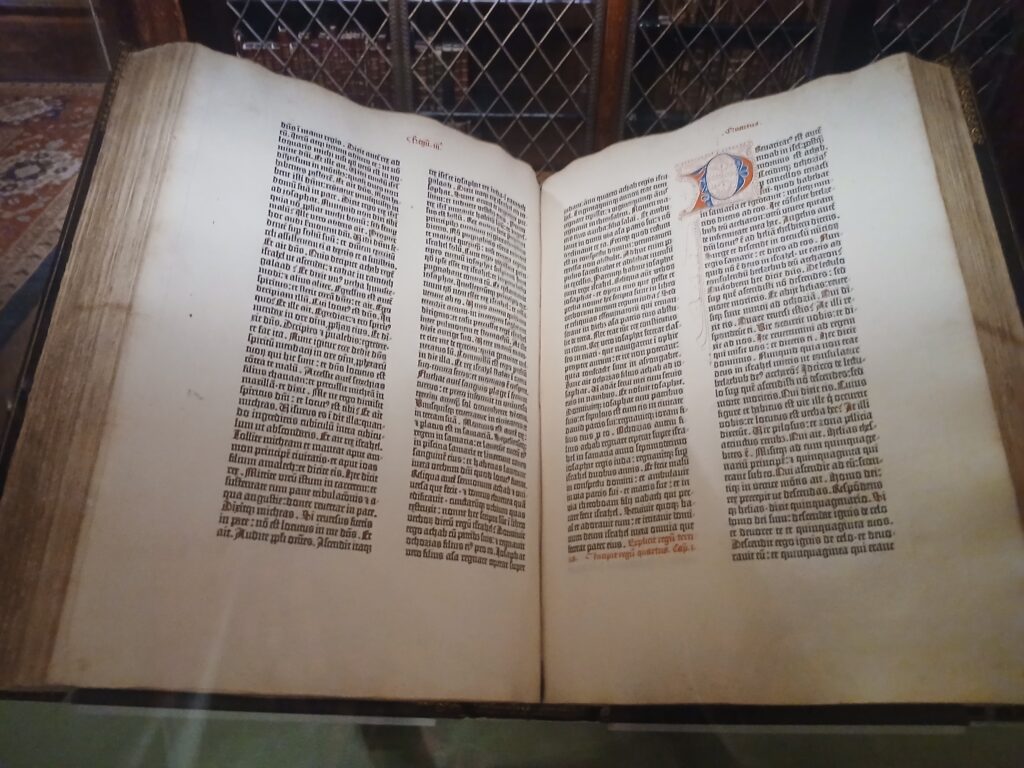
The Morgan Library has 3 Gutenberg Bibles – the largest collection owned by any institution. Two are on paper and one is on animal skin. These bibles are the first printed books made. There are only 50 remaining Gutenberg bibles in varying states of completeness, out of 180 copies made. The Morgan Library keeps one on display at any given time. This Bible is from 1455, from Mainz, GErmany.
This library holds maybe 10% of the entire holdings, and the library continues with acquisitions. There was a children’s book collection in the room that they recently acquired, complete with miniature books.
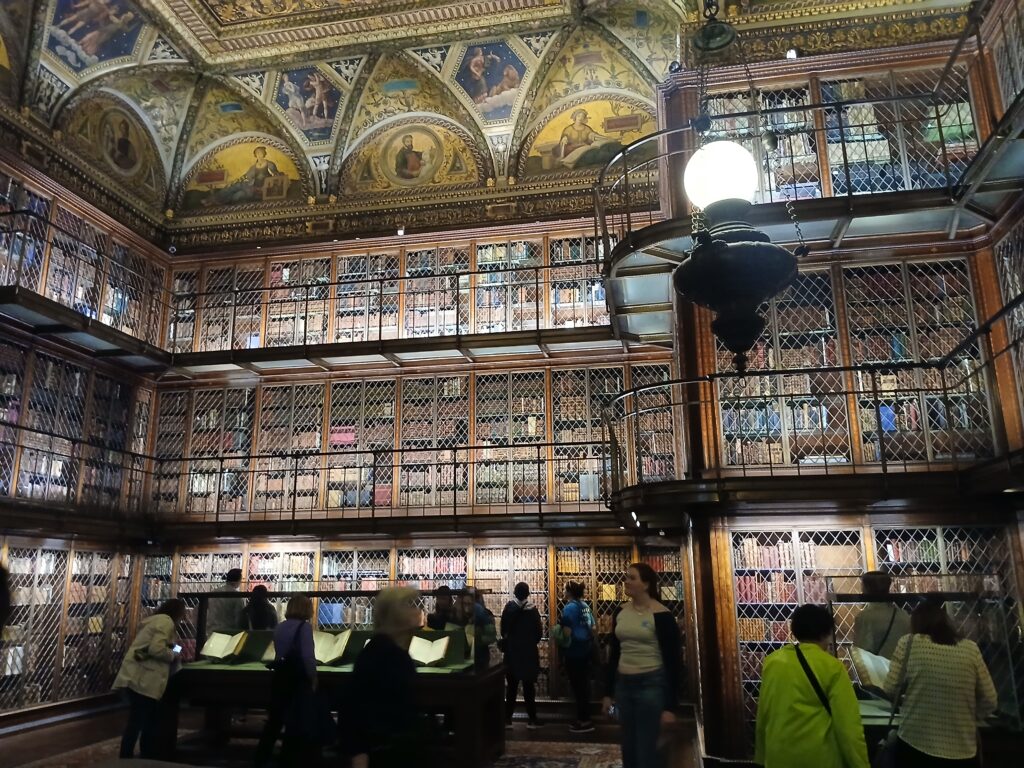
If you’re wondering how the librarians get to the second or third floor, it’s through a secretly hidden staircase behind this bookcase below. If you look closely, you’ll see a handle and hinge. The bookcase opens to reveal the staircase. Or so the audioguide told me – I didn’t try it for myself. There is one on either side of the entrance to the library.

The library has rotating books on display. The one below is the first book printed in Ge’ez (Ethiopic) language. It was the first printed in Europe in a non-Western language other than Hebrew. It was printed in 1513.

The book below is the Divine Comedy by Dante, “the missing Dante.” The first three editions of Dante’s poem were produced by three different printers in Italy. The Morgan Library had two of them, and finally got the third. This was printed in 1472. And you should read/listen to Inferno by Dan Brown – that centers around the Divine Comedy – it made me appreciate this more.
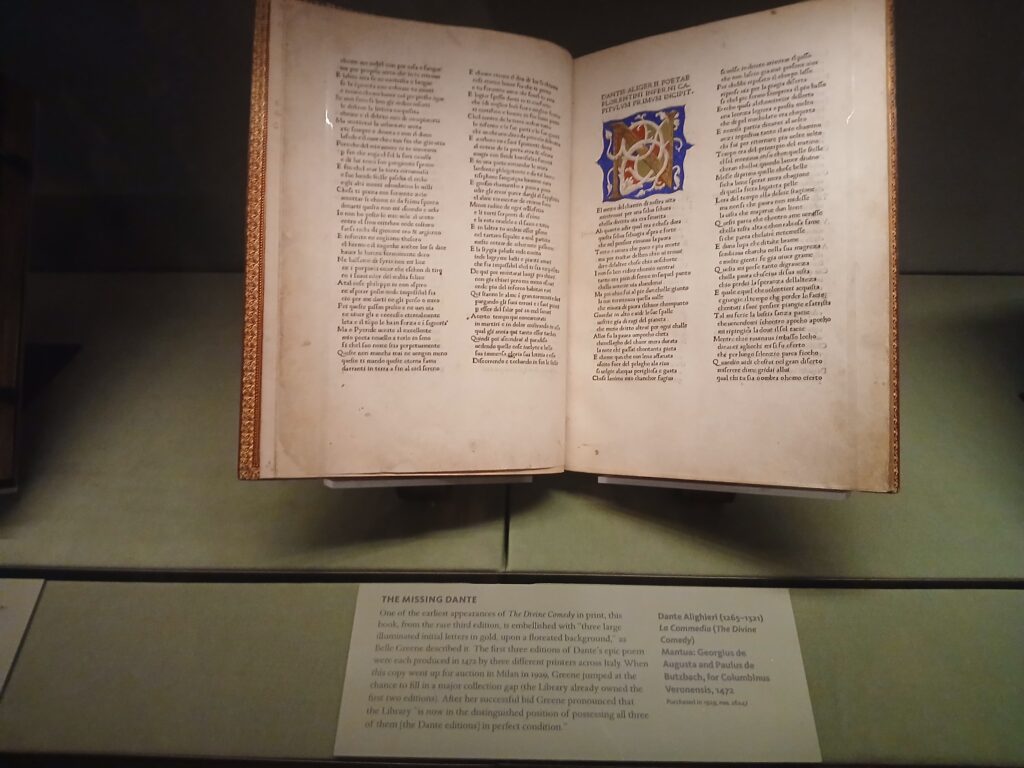
The book above is the first book printed by Caxton – and the first book printed in the English language. It is about the history of Troy, printed in 1473-74.
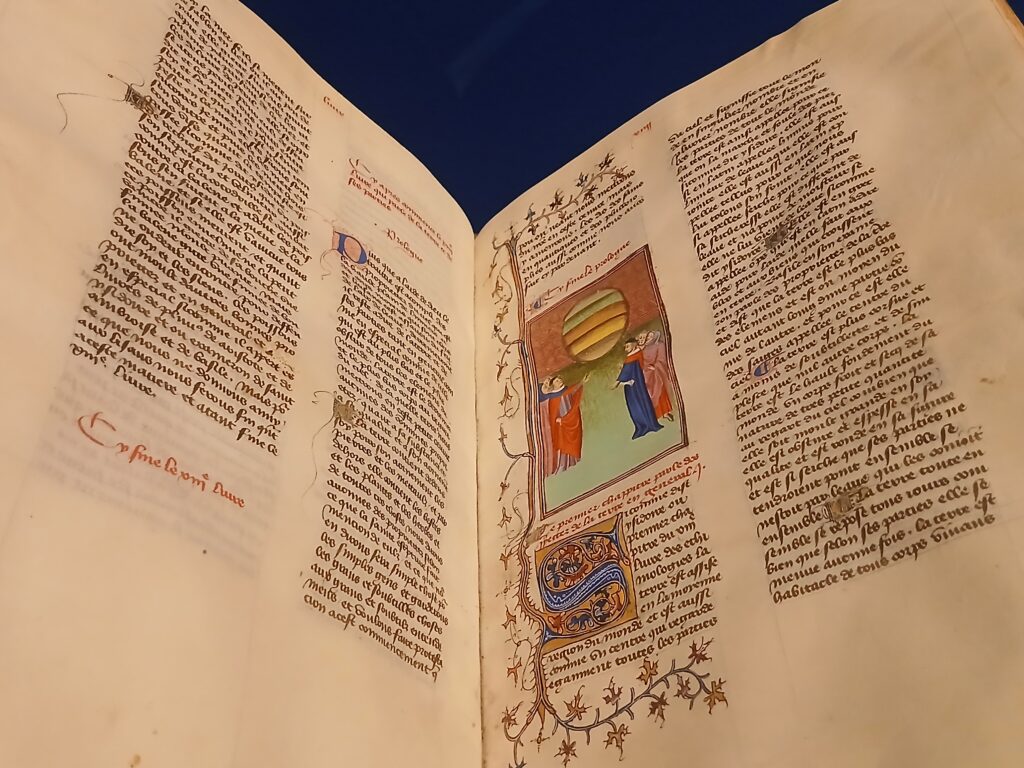
There was a small exhibit ending May 25 about the Book of Marvels – imagining the medieval world. Think: Gulliver’s Travels, with tales and illustrations of how authors and illustrators imagined other lands and people in those times. Hint: it’s not always PC. There are lot of gorgeous illustrated texts, plus the first map ever printed (hint: you can’t actually use it for navigation). It’s a small space that can get crowded, but full of fantastical creatures.

The open area here, in the expansion by architect Renzo Piano, has a lovely cafe. There’s also a children’s reading nook off to the right of this staircase, with some books and cute chairs. Take advantage!

The current exhibit about Belle da Costa Greene, the librarian and eventual director of the museum, ends May 4. While you’ll probably miss it, it’s worth reading about her and sharing this with your kids. She was a fascinating woman. Born to a mixed-race family, her father was the first Black Harvard graduate, and her grandfather received his medical degree but was unable to practice in the U.S. She passed as white and changed her name (as did other family members) to a more Portuguese name (perhaps to explain her slightly darker coloring than other white people). She became a library at the Morgan, and eventually became the director. She had her own collection and was quite cultured. The exhibit follows her life before, during and after her time at the Morgan, along with some background on race issues at the time.
